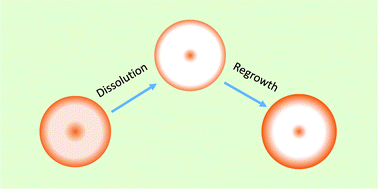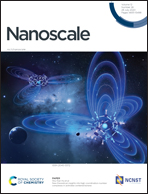Formation of resorcinol-formaldehyde hollow nanoshells through a dissolution–regrowth process†
Abstract
We report here that dissolution and regrowth of resorcinol formaldehyde (RF) colloidal particles can occur spontaneously when they are subjected to etching in solvents such as ethanol and tetrahydrofuran, resulting in the formation of hollow nanostructures with controllable shell thickness. The hollowing process of the RF particles is attributed to their structural inhomogeneity, which results from the successive deposition of oligomers with different chain lengths during their initial growth. As the near-surface layer of RF colloids mainly consists of long-chain oligomers while the inner part consists of short-chain oligomers, selective etching removes the latter and produces the hollow structures. By revealing the important effects of the condensation degree of RF, the etching time and temperature, and the composition of solvents, we demonstrate that the morphology and structure of the resulting RF nanostructures can be conveniently and precisely controlled. This study not only improves our understanding of the structural heterogeneity of colloidal polymer particles, but also provides a practical and universal self-templated approach for the synthesis of hollow nanostructures.



 Please wait while we load your content...
Please wait while we load your content...